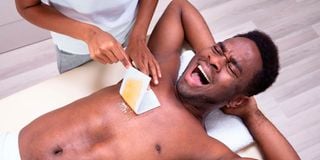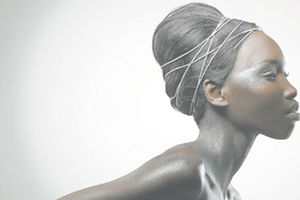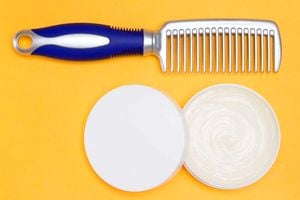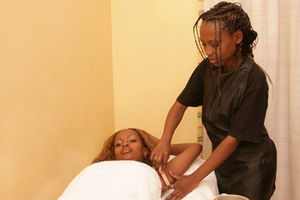
For a burn from heated wax, the severity of it depends on the temperature, contact time and the area that is being waxed.
Dermatologists are raising concerns over counterfeit hair-removal kits and the proliferation of untrained wax specialists in the Kenyan market, as an increasing number of women end up with burns on their private parts, legs, and armpits.
In pursuit of smooth, hair-free skin that lasts four to six weeks, many women have turned to waxing. But the quest to get rid of the hair comes at a price—painful burns from the wax or creams and infected skin, which is flaky or with boils.

Dr Gacheri Kathiri.
Dr Gacheri Kathiri, a clinical dermatologist and aesthetics practitioner, says that these burns are attributed to several issues. The first is the beauty industry being unregulated, with substandard products finding their way to Kenya and uncertified wax specialists offering the services.
"This means the quality of some of the wax used is not standardised. Just like other beauty products, the ingredient list in most of these products is either misleading or not the true percentage. There could also be other added ingredients, either declared or not, that could be either harmful or safe but cause sensitivity to an individual," she says.
The most common ingredients in the wax are honey, chocolate, sugar, resin, oils, and fruit enzymes. However, Dr Kathiri says that any type of skin can be sensitive and can react to any of these products.
Secondly, many beauticians using these products are not adequately trained to handle uncommon cases, such as clients with sensitive skin or those experiencing immediate side effects.
"It is important for first-timers to undergo a patch testing (a small area tested with the wax to get a feel)," she says.
In most cases, this does not happen, as women line up in city spas for quick 15-minute waxing sessions.
Waxing side effects
Some of the side effects seen from waxing, according to Dr Kathiri are either caused by the ingredients in the wax, the temperature of the wax in cases of heated wax, the peeling of the wax itself, the environment that the procedure is being done, and the type of the client's skin.
"These sensitivity reactions range from mild redness, a rash that could be itchy or not, bruising or bumps," she says.
When this (superficial burn) is noticed, the area should be cleaned or rinsed with water, put some petroleum or aloe vera gel, use some cold compresses and if need be, take painkillers.
For a burn from heated wax, the severity of it depends on the temperature, contact time and the area that is being waxed. Dr Kathiri says, that in case of a deeper burn especially the bikini area, one needs to see a doctor for a quick evaluation and management, to avoid scarring of such sensitive areas.
Pulling the wax strip
Additionally, beauticians should be gentle while peeling off the wax, especially after using soft waxes for one can bleed or peel off the actual skin or layers of it.
Dr Kathiri says, that while cold compresses manage the bleeding, clients prone to skin peeling may benefit from opting for hard wax instead.
"The only catch is to apply some oil to coat the skin before placing the heated wax which traps the hairs only."
For those with sensitive skin to traditional wax, they could try more gentle wax like fruit wax which is a type of hard wax with antioxidants and anti-inflammatory properties. Sugar wax and chocolate wax are also gentle, with chocolate wax causing the least pain.
While peeling, the general rule in pulling waxing strips is to pull in the hair direction. Dr Kathiri says that pulling against could encourage ingrown hairs, and the irritation of the follicles could cause irritating bumps in such areas.
Cleanliness of the environment and tools should also be non-negotiable to avoid a skin infection, either bacterial, viral, or fungal.
"While waxed areas darken days after (post-inflammatory hyperpigmentation), you can avoid this by moisturising the treated areas well and applying sunscreen to the sun-exposed areas," she says.
After waxing, Dr Kathiri says one should moisturise well since waxing does increase skin permeation by decreasing the stratum corneum [the outermost layer of the epidermis]. Keep the waxed area clean for the first few days as the skin barrier function could be altered a bit, predisposing one to superficial infections, including folliculitis (infection of the hair follicles which causes white-headed pimples that may itch or be painful).











